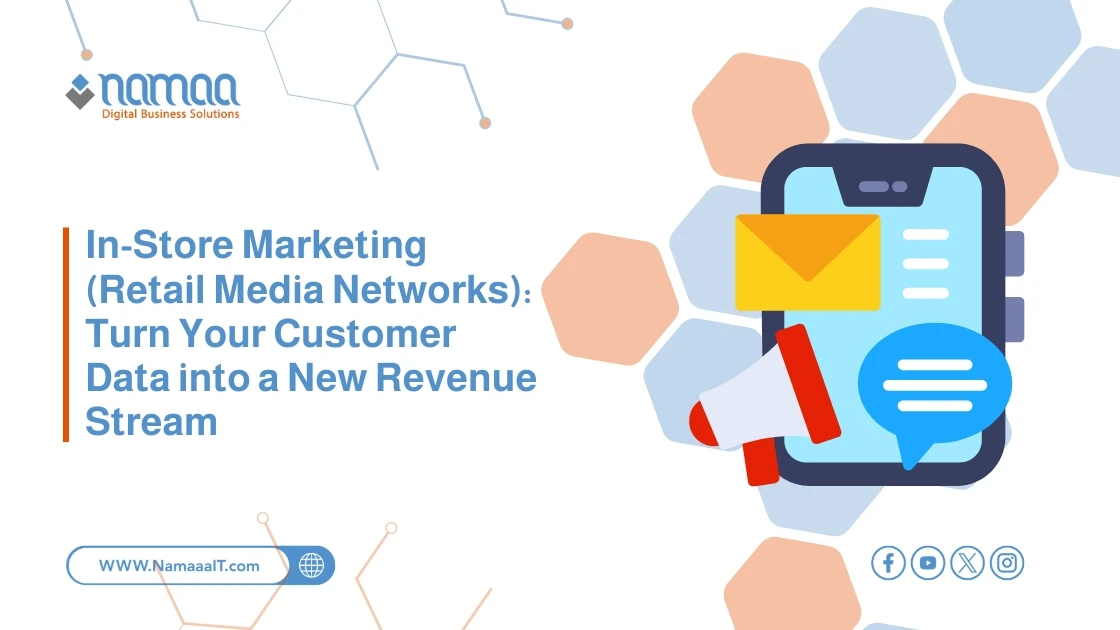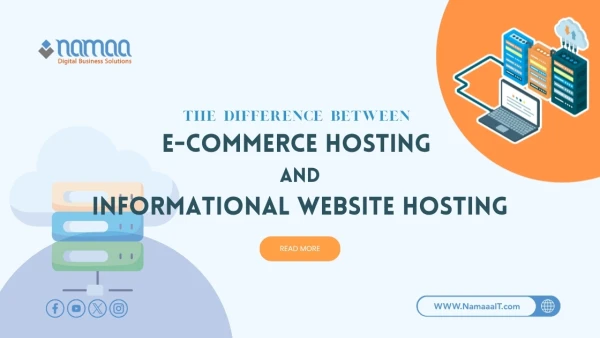In the highly competitive world of e-commerce, In-Store Marketing (Retail Media Networks) represents a major transformation in digital advertising. It enables retailers to turn their online platforms and physical points of sale into income-generating advertising channels. These networks rely on first-party data collected by the store about customer behavior and purchasing preferences, allowing brands to display highly targeted ads at the most critical moment — right before purchase.
For retailers, this approach not only creates a new source of revenue but also enhances the shopping experience by presenting relevant offers and products that match customer interests.
What Is In-Store Marketing (Retail Media Networks)?
Retail Media Networks (RMNs) are an advertising model in which retailers (whether online or physical) allow other brands to display ads directly on their owned digital properties or inside their stores.
Simply put, the retailer transforms their website or app into an advertising platform, using available space to display sponsored products or ads from companies seeking to reach its customer base.
How Do Retail Media Networks Work?
These networks operate through an integrated system that allows advertisers to purchase ad placements across a retailer’s digital channels. The retailer provides an ad platform (either developed internally or through a specialized tech partner) that enables advertisers to target specific audience segments based on browsing and purchase behavior.
This ensures that ads reach the most relevant audience at the exact moment they are ready to buy.
Learn more: AI Product Recommendation Agents
The Importance of First-Party Data in Retail Media Networks
The true power of Retail Media Networks lies in their use of first-party data — information collected directly from customers by the retailer, such as:
Purchase history: Products previously bought.
Browsing behavior: Pages visited and products searched for.
Demographic data: Information provided during registration.
Loyalty program data: Insights from rewards and membership programs.
This data is highly accurate and reliable since it comes from real customer interactions. It allows advertisers to personalize their campaigns with precision, achieving better results than relying on third-party data, which is often less accurate.
How Can Retailers Benefit from Building Their Own Ad Network?
Creating a Retail Media Network is a strategic opportunity for retailers to generate more than just product sales.
By renting out their digital ad space, they open a new high-margin revenue stream. This additional income strengthens competitiveness in a market where profit margins are often squeezed by price wars and logistics costs.
Also read: Instant Commerce
Key Technologies for Building a Successful Retail Media Network
To build an effective ad network, retailers need a combination of interconnected technologies that ensure smooth operations and real value for advertisers.
Core Infrastructure
Ad Server: A platform for managing, serving, and tracking ad performance.
Data Management Platform (DMP) or Customer Data Platform (CDP): For securely collecting, segmenting, and analyzing first-party data.
Programmatic Advertising Tools: Enable automated and targeted ad buying.
Analytics & Measurement Tools
Advanced Analytics Systems: Provide detailed reports linking ad spend to actual sales.
Conversion Tracking Systems: Measure how many customers completed a purchase after viewing an ad.
Measuring ROI (Return on Investment) in Retail Media Campaigns
ROI is a key indicator for evaluating campaign success. It’s calculated by comparing the revenue generated from a campaign against its total cost:
ROI = (Revenue from Ads – Cost of Ads) / Cost of Ads
To get a full picture, retailers should track these key performance indicators (KPIs):
ROAS (Return on Ad Spend): Revenue generated per dollar spent.
Conversion Rate: Percentage of users who made a purchase after clicking an ad.
CAC (Customer Acquisition Cost): Average cost to acquire a new customer.
AOV (Average Order Value): Average spending per completed purchase.
Balancing Ads with User Experience
To strike the right balance between ad visibility and user experience, ads must be highly relevant and seamlessly integrated into the shopping journey.
Instead of intrusive pop-ups, ads can appear naturally within search results or category pages, enhancing discovery without disrupting navigation.
The goal is for the user to feel that the ad is a helpful recommendation, not an interruption — helping them find products that genuinely match their needs.
Partner with Experts to Build a Profitable Retail Media Strategy
To transform this knowledge into a practical, revenue-generating strategy for your store, consult the experts at Nama today.
Our specialized team will provide you with a tailored action plan aligned with your business goals.
Frequently Asked Questions (FAQs)
1. Can small and medium-sized businesses benefit from Retail Media Networks?
Yes. Major retail platforms like Amazon and Walmart offer self-service ad solutions, allowing SMBs to launch flexible-budget campaigns and reach large audiences.
2. What’s the difference between On-site and Off-site Retail Media ads?
On-site ads appear directly on the retailer’s website or app.
Off-site ads use the retailer’s first-party data to target the same audience on external platforms (e.g., social media or news sites).
3. Can non-endemic advertisers (brands not selling in the store) advertise on these networks?
Yes. For instance, financial service providers or car brands can advertise on major retail websites to reach large audiences based on demographic and behavioral data.
4. How does AI impact the future of Retail Media Networks?
AI plays a key role by analyzing customer data, predicting purchasing behavior, and delivering real-time personalized ads, improving both effectiveness and user experience.
5. What are “Data Clean Rooms,” and what role do they play?
Data Clean Rooms are secure environments that allow retailers to share aggregated customer data with advertisers without revealing individual identities.
They enable advertisers to analyze campaign performance and combine retailer data with their own for deeper insights.
Summary
✅ Global ad spending on Retail Media Networks is expected to reach $140 billion by 2024, making it one of the fastest-growing advertising channels.
✅ Campaigns powered by first-party data generate up to 2.9x more revenue than those using third-party data.
✅ Retail Media Networks deliver exceptionally high margins (70–90%) compared to traditional retail profit margins of just ~4%.
✅ Advertisers report strong ROI — for example, Kroger’s campaigns achieved a 4:1 ROAS and an 11% increase in sales.
✅ Retail Media Networks now account for around 20% of global digital ad spend, confirming their dominance in the evolving digital advertising landscape.









